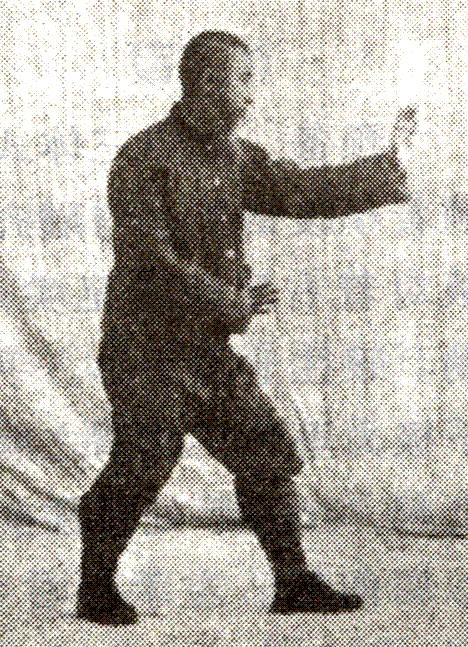 My new e-book on Kung Fu, Secrets of Kung Fu Mastery: The Fundamentals, is hot “off the press” from Amazon. This 50-plus page e-book, with numerous photos and images, provides a brief overview of Kung Fu history, the importance of stances, conditioning, kicks, hand and other strikes, forms training, and Kung Fu weapons. Be sure to get your copy soon! And stay tuned for more resources, deals, and specials, in the future!
My new e-book on Kung Fu, Secrets of Kung Fu Mastery: The Fundamentals, is hot “off the press” from Amazon. This 50-plus page e-book, with numerous photos and images, provides a brief overview of Kung Fu history, the importance of stances, conditioning, kicks, hand and other strikes, forms training, and Kung Fu weapons. Be sure to get your copy soon! And stay tuned for more resources, deals, and specials, in the future!
Steven Seagal Aikido Documentary–very good
Here’s a terrific Steven Seagal Aikido documentary, “Path Beyond Thought.” It’s a long one, but well worth the time. He’s the real deal, when it comes to Aikido.
I am Not the MMA Fighter Patrick Smith…Just to be clear
To clear up any confusion, I am not the famous MMA fighter Patrick Smith. I have never competed in the martial arts. Although he and I have both studied Tang Soo Do and Tae Kwon Do, we are not the same person. I have never met him before. He has also studied a number of styles that I have not studied, including Hapkido, in which he holds a black belt, as well as Kenpo Karate. One of the American synthetic styles (a sort-of MMA before there was MMA) I studied did utilize some Kenpo Karate, as the style’s founder, my instructor, was a high ranking Kenpo Karate (among other styles) master. This is just to clear up any confusion.
My New E-Booklet on Palm Sticks for Self-Defense is now Available!
 My newest electronic resource, Palm Stick Self-Defense Guide, is now available from Amazon.com. And boy am I excited about it! Palm sticks, like kubotans and koppos, have become increasingly popular among self-defense enthusiasts. I try to make helpful suggestions and recommendations that are practical, realistic, and intended to keep you safe, out of the morgue, hospital, and prison. Be sure to check it out! Hopefully you’ll find it helpful! More to come, with some upcoming Amazon specials. So stay tuned!
My newest electronic resource, Palm Stick Self-Defense Guide, is now available from Amazon.com. And boy am I excited about it! Palm sticks, like kubotans and koppos, have become increasingly popular among self-defense enthusiasts. I try to make helpful suggestions and recommendations that are practical, realistic, and intended to keep you safe, out of the morgue, hospital, and prison. Be sure to check it out! Hopefully you’ll find it helpful! More to come, with some upcoming Amazon specials. So stay tuned!
The “Rowing Exercise” of Aikido
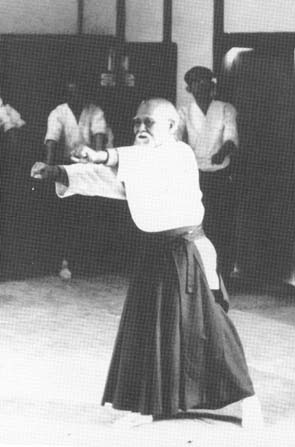 One of the common warm up exercises universally seen in Aikido dojos is called funekogi or sometimes the “rowing exercise.” This is an excellent exercise, and really could benefit practitioners of other martial arts beyond Aikido. When I first began studying Aikido and practicing, I didn’t really know what was going on and I think for the first few years, I just went through the motions with funekogi. It looks, and can feel…empty. In reality, when done well, funekogi is a great way of developing power. There are lots of ways of doing funekogi “correctly.” There’s no one way of doing it, although there are wrong ways to do it. But if you want to feel how this exercise can develop tremendous power, try a few things. (1) Grind your feet into the ground, digging your big toes hard into the ground. (2) lower your center a bit. (3) really use the ground that your feet are gripping as you move forward and back…you should be able to feel this in your hips and legs. (4) add some spirals in your arms, if you don’t already. This last point has to do with spirals, twists, appearing in your arms, but it’s really happening inside of you: palms down when your arms thrust forward, palms up when your arms pull back in. If you watch any of the videos of O Sensei (Morihei Ueshiba) doing funekogi, he’s spiraling like crazy! His funekogi looks more powerful than any I’ve seen. That shouldn’t be surprising because he was such an incredible martial artist. But I’ve never even seen anything close to it. My sense is we don’t practice funekogi this way. It’s not about muscle either. Aikido is never about muscle. But this is a solo exercise, so you’re not using your opponent’s energy….there is no uke. You’re using the ground forces of the earth, and you’re generating energy from your center. This is probably one of the most important Aikido exercises so keep practicing it! You will reap the benefits down the road!
One of the common warm up exercises universally seen in Aikido dojos is called funekogi or sometimes the “rowing exercise.” This is an excellent exercise, and really could benefit practitioners of other martial arts beyond Aikido. When I first began studying Aikido and practicing, I didn’t really know what was going on and I think for the first few years, I just went through the motions with funekogi. It looks, and can feel…empty. In reality, when done well, funekogi is a great way of developing power. There are lots of ways of doing funekogi “correctly.” There’s no one way of doing it, although there are wrong ways to do it. But if you want to feel how this exercise can develop tremendous power, try a few things. (1) Grind your feet into the ground, digging your big toes hard into the ground. (2) lower your center a bit. (3) really use the ground that your feet are gripping as you move forward and back…you should be able to feel this in your hips and legs. (4) add some spirals in your arms, if you don’t already. This last point has to do with spirals, twists, appearing in your arms, but it’s really happening inside of you: palms down when your arms thrust forward, palms up when your arms pull back in. If you watch any of the videos of O Sensei (Morihei Ueshiba) doing funekogi, he’s spiraling like crazy! His funekogi looks more powerful than any I’ve seen. That shouldn’t be surprising because he was such an incredible martial artist. But I’ve never even seen anything close to it. My sense is we don’t practice funekogi this way. It’s not about muscle either. Aikido is never about muscle. But this is a solo exercise, so you’re not using your opponent’s energy….there is no uke. You’re using the ground forces of the earth, and you’re generating energy from your center. This is probably one of the most important Aikido exercises so keep practicing it! You will reap the benefits down the road!
My New Facebook Page
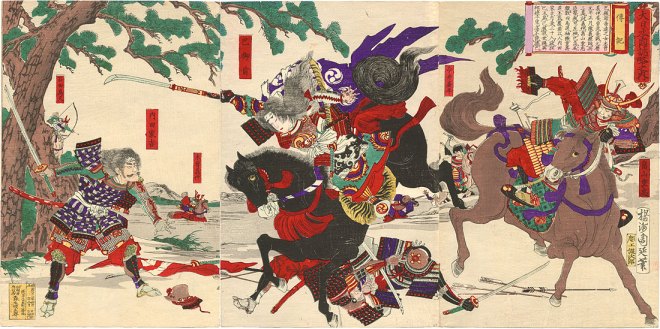 For those of you on Facebook, check out my new Facebook page, Pat Smith Martial Arts. It’s listed as a Facebook community, so if you click “like” on it, you can keep posted on what’s happening on the blog in your Facebook news feed. I’ll be adding more photos on the Facebook page than on the blog, but I’ll also be posting all of the blog posts to the Facebook community page, so check us out! For the moment, the page has the same cool painting of the Japanese Samurai warriors above, and the profile pic is of the great Chinese martial Artist, especially known for the internal styles Tai Chi, Hsing-I, and Pa Kua, Sun Lutang, whose image is below.
For those of you on Facebook, check out my new Facebook page, Pat Smith Martial Arts. It’s listed as a Facebook community, so if you click “like” on it, you can keep posted on what’s happening on the blog in your Facebook news feed. I’ll be adding more photos on the Facebook page than on the blog, but I’ll also be posting all of the blog posts to the Facebook community page, so check us out! For the moment, the page has the same cool painting of the Japanese Samurai warriors above, and the profile pic is of the great Chinese martial Artist, especially known for the internal styles Tai Chi, Hsing-I, and Pa Kua, Sun Lutang, whose image is below.
Most Important Self-Defense Tip You’ll Ever Get

With a blogpost title like, “Most Important Self-Defense Tip You’ll Ever Get,” you’re probably expecting some devastating martial art technique or powerful weapon—-especially from a blog devoted to the martial arts. Well, sorry to disappoint, but the most important self-defense tip you could ever have, in my opinion, is how to avoid potential dangers through learning to be more aware of your surroundings. Avoidance will always be more important than any martial technique you could ever learn.
I’m planning on some future e-books or articles on self-defense, so stay tuned for much more, but here I just want to cover some fundamentals, which unfortunately are missing from too many martial arts programs. Fleeing a potential self-defense scenario is far better than violent engagement, when flight is possible.
So how can you avoid such confrontations? Well, there are no guarantees. This is one of the many reasons I think everyone should learn martial arts. So many times, however, such situations can be avoided. I just give one example, one danger I see almost every day: walking while texting. Granted that this is not nearly as stupid or dangerous as texting while driving. But, it remains incredibly dangerous, just for other reasons. When you are texting, you are not aware of your surroundings. Chances are, if you are texting, or looking at your phone for any reason while walking about, you are less likely to notice the presence of attackers until it’s too late. I was recently driving through a very rough inner city neighborhood at night and I noticed a young woman walking alone (already a less-than-ideal situation, but often there are no other options) and she was texting or something similar on her phone, head down the whole time. Very dangerous. You have to be aware of your surroundings, and often this is even more important in the areas you are familiar with, and when you feel comfortable, as she obviously did, than in the areas you feel less comfortable. This goes for so-called “safe” areas (there’s really no such thing anymore) as well as cities.
So, the first thing to do is minimize your distractions when you are out and about. Don’t use your phone unless you need to for an emergency. And, for crying out loud, don’t stick things in your ears, listening to music or the news or such nonsense.
Next, when possible, travel with others, not alone. This doesn’t guarantee you won’t be harmed, mugged, kidnapped, killed, etc., but it can reduce the likelihood. The fact of the matter is that potential threats don’t want to get resistance. They have a mission—-to rob, to kill, to bully, to rape, to join a gang, to exact revenge, to whatever— but they want to accomplish whatever it is they’re trying to accomplish, with as much ease as possible. Thus they don’t want the alarm sounded before they’re ready. They don’t want to be harmed or killed themselves (at least not until they’ve accomplished they’re mission). More people equals less easy target…usually.
Walking with a sense of confidence also helps. If you’re afraid, seasoned street fighters, armed robbers, etc, will be able to sense it. Nowadays, so many armed robbers, attackers, etc, are high on drugs that this isn’t the case, but walking with your head up—not staring at anyone, but not avoiding them either, back erect, confident gait—-all of these combined make one appear less a target. This is especially important for men (who, believe it or not, are more often the victim of violent attack than women), but it applies to everyone.
But most importantly, and more to the point of this post, is awareness of one’s surroundings. You have to start being aware of your surroundings. Be aware where people are positioned, where their hands are. When you begin to think like this for the first time, it takes lots of effort and practice. Eventually it becomes second nature. You want to evaluate others: could he or she be a threat? This has NOTHING to do with skin color. You’ll start to be able to recognize potential threats more as you practice, but would be threats can often be seen in the eyes and in how they hold themselves. Are they on drugs? You can often tell the high from the eyes. How are they holding themselves? Are they scanning the crowd. Can you see where their hands are? Is one hand behind their back, or deep in a pocket?
You also need to start being aware of safe distances. If someone you already perceive to be a threat is walking straight towards you, at what point would you feel unsafe? If they get to within range of a kick, you’re already too late.
You need to start becoming aware of where a potential attacker could be hiding:around the corner, behind the door, in the doorway or alleyway, behind a parked car, etc. You also need to be aware of potential lines of escape.
These comments are not intended to make you paranoid, but rather to get you to start asking questions, wherever you find yourself. Until it becomes second nature, you should practice always asking yourself where a potential attacker could be, who might be a potential threat, where could I escape if need be.
In later posts, and in future e-resources from Kindle, I’ll write more about this topic, including potential everyday items that could easily and quickly be turned into weapons of defense. For example, at a restaurant: a drink, a ceramic mug, your plate. In your normal everyday work: a pen, a pencil, a book, a tool. At home: an umbrella, a baseball cap, utensils, pots, pans, children’s hard toys, a hand towel. The possibilities really are endless.
For now, start becoming increasingly aware of your day-to-day surroundings. Avoid places in the shadows. Park your car close to lighted areas. Carry a cellphone in case of emergencies, but don’t use your cellphone while you’re moving about unless it is an emergency. Try to avoid what places and people who make you feel threatened. If someone is at your door and you don’t feel comfortable answering it…don’t. Trust your gut. Better safe than sorry.
If you liked this post, check out my book of self-defense tips.
Limited Time Give Away: Essential Tips 2!!!
T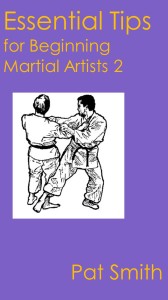 he sequel to my popular Essential Tips for Beginning Martial Artists, is being given away for FREE on Amazon.com for Kindle users! But this special deal is for a limited time only. The freebie giveaway doesn’t begin until this Saturday, October 17, 2015, and it only lasts through next Weds., October 21, 2015. So be sure to mark your calendar and get your free copy of Essential Tips for Beginning Martial Artists 2. In this sequel, you’ll learn all sorts of essential tips, including how to use (and how not to use) martial arts books and videos, as well as safety tips for weapons training, and much more.
he sequel to my popular Essential Tips for Beginning Martial Artists, is being given away for FREE on Amazon.com for Kindle users! But this special deal is for a limited time only. The freebie giveaway doesn’t begin until this Saturday, October 17, 2015, and it only lasts through next Weds., October 21, 2015. So be sure to mark your calendar and get your free copy of Essential Tips for Beginning Martial Artists 2. In this sequel, you’ll learn all sorts of essential tips, including how to use (and how not to use) martial arts books and videos, as well as safety tips for weapons training, and much more.
The Foundational Four: The 4 Foundational Weapons of Kung Fu
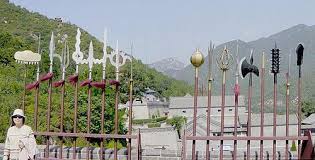 Kung Fu styles often include a variety of weapons within their martial repertoire. Northern styles, especially, often include an immense panoply of weapons to choose from. This was true of the Shaolin Temple as well. Monks at the Shaolin Temple trained in an incredible number of distinct weapons.
Kung Fu styles often include a variety of weapons within their martial repertoire. Northern styles, especially, often include an immense panoply of weapons to choose from. This was true of the Shaolin Temple as well. Monks at the Shaolin Temple trained in an incredible number of distinct weapons.
Chinese weapons can often be distinguished by their length (long versus short), by being single or double (like the double broadsword, double straight sword, or double ring daggers), as staff or sword, but also by the category “flexible,” which can include such obscure (to the uninitiated) weapons as metal section whips (like the 9 section steel whip), and the meteor hammer (a rope with a metal ball attached at the end). Some weapons fit in multiple categories, e.g., the 3 section staff, one of my favorites, is a staff and can reach a great length, and yet, it is also considered a flexible weapon. I wouldn’t recommend novices try the 3 section staff. You should probably have gained proficiency in at least long staff (if not also spear), and also at least one flexible weapon (beyond nunchaku) before attempting the 3 section staff.
Some Kung Fu styles, like Wing Chun, only include a very few weapons. Traditionally, Wing Chun only includes their long staff, which is very long (usually over 8 inches), and the butterfly swords. When I studied Wing Chun, we also included some more practical weapons like the knife and the stick or short staff, but the only forms are for the long staff and butterfly swords. My Sifu was including fighting techniques he had learned from Filipino styles (e.g., Kali, Arnis, Escrima) to augment our training.
For most Kung Fu styles, and especially the northern styles, there remain four foundational weapons in which students are expected to gain proficiency–the long staff, spear, broadsword, and straight sword. Often times, but not always, basic proficiency in all four is required prior to the black sash. The weapons add a more complicated element, and more dangerous, to regular empty hand forms training. Each weapon becomes an extension of the body. Weapons training, because of the weight of the weapons, can be a great form of strength training.
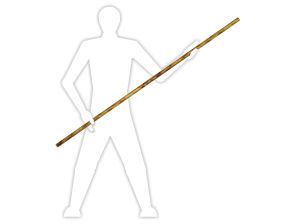 The long staff is perhaps the most difficult of the four to learn, although straight sword forms are often more complicated. Traditionally for northern styles, the ones with which I’m most familiar (despite having studied Wing Chun which is southern, and rather an exception in many ways), the staff should not be too long–eyebrow height, or an inch or less (or a little more) over the head, but not much. Top of the head level is fine. Long staff techniques in general involve complicated twirls, spins, strikes from both ends, that involve the hands changing position frequently throughout the forms. Each style has slightly different traditions of using the staff, and so some involve more hand changing than others. But in comparison with Japanese and Okinawan uses of the staff, in my experience, the Chinese styles are far more complicated, and again, this seems to be the case especially with the northern styles like Northern Praying Mantis Kung Fu styles (and there are many different Northern Praying Mantis Kung Fu styles), with which I’m more familiar.
The long staff is perhaps the most difficult of the four to learn, although straight sword forms are often more complicated. Traditionally for northern styles, the ones with which I’m most familiar (despite having studied Wing Chun which is southern, and rather an exception in many ways), the staff should not be too long–eyebrow height, or an inch or less (or a little more) over the head, but not much. Top of the head level is fine. Long staff techniques in general involve complicated twirls, spins, strikes from both ends, that involve the hands changing position frequently throughout the forms. Each style has slightly different traditions of using the staff, and so some involve more hand changing than others. But in comparison with Japanese and Okinawan uses of the staff, in my experience, the Chinese styles are far more complicated, and again, this seems to be the case especially with the northern styles like Northern Praying Mantis Kung Fu styles (and there are many different Northern Praying Mantis Kung Fu styles), with which I’m more familiar.
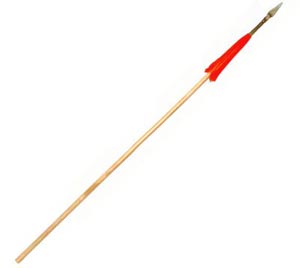 The spear, although perhaps fancier, is relatively less complicated than the long staff, so if you have your style’s long staff form down, the spear should not be too difficult to learn. Chinese spear forms sometimes use the butt end for strikes, and there are still spins, but in general, far less than with long staff forms, since the main striking portion of the spear is the sharp spear head. This was a very traditional Kung Fu weapon, but, unlike what we might picture as its use in warfare, traditional Kung Fu forms do not focus on the spear as a javelin to be thrown, but rather as a long weapon (like a long staff) to be retained and used to keep an opponent at a distance (and thus create an opportunity for escape), or to finish them off, and then flee with spear in tow.
The spear, although perhaps fancier, is relatively less complicated than the long staff, so if you have your style’s long staff form down, the spear should not be too difficult to learn. Chinese spear forms sometimes use the butt end for strikes, and there are still spins, but in general, far less than with long staff forms, since the main striking portion of the spear is the sharp spear head. This was a very traditional Kung Fu weapon, but, unlike what we might picture as its use in warfare, traditional Kung Fu forms do not focus on the spear as a javelin to be thrown, but rather as a long weapon (like a long staff) to be retained and used to keep an opponent at a distance (and thus create an opportunity for escape), or to finish them off, and then flee with spear in tow.
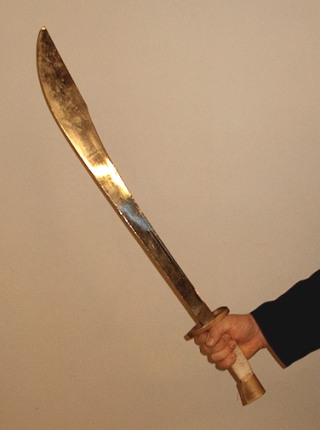 The broad sword is arguably the easiest and least complicated of these four weapons to learn. It is often taught as the first weapon in Chinese martial arts styles, although this is not always the case. Its use is very different from say the uses of the Japanese sword…although obviously both are used to cut an opponent, and can of course be used to behead, remove limbs, etc. Sorry for the graphic description, but that’s how swords functioned in combat. Japanese swords, which have their own elegance and martial use, are far more subtle than the Chinese broadsword (although less subtle than the Chinese straight sword). The Kung Fu broadsword is more like a battle ax, for hacking away at an opponent. There are exceptions, but in general, if you watch a broadsword form, you should notice that the arms are moving primarily at the shoulder, not at the wrist, nor at the elbow. This is pretty universal across Kung Fu styles, and it has to do with the way the blade is wielded. Broadswords come in a variety of blade flexibilities (from quite flimsy to stiff) and weights (some of which can be quite heavy, and give an incredible workout). I won’t discuss the merits of different types of broadsword specs here, since it all depends upon your purpose and goals. Broadsword forms can be quite eloquent, especially the combination of blocks and strikes. After you master the broadsword, you can even learn the double broadsword, which is a rather difficult weapon to learn (coordinating both arms), but beautiful to watch when performed well.
The broad sword is arguably the easiest and least complicated of these four weapons to learn. It is often taught as the first weapon in Chinese martial arts styles, although this is not always the case. Its use is very different from say the uses of the Japanese sword…although obviously both are used to cut an opponent, and can of course be used to behead, remove limbs, etc. Sorry for the graphic description, but that’s how swords functioned in combat. Japanese swords, which have their own elegance and martial use, are far more subtle than the Chinese broadsword (although less subtle than the Chinese straight sword). The Kung Fu broadsword is more like a battle ax, for hacking away at an opponent. There are exceptions, but in general, if you watch a broadsword form, you should notice that the arms are moving primarily at the shoulder, not at the wrist, nor at the elbow. This is pretty universal across Kung Fu styles, and it has to do with the way the blade is wielded. Broadswords come in a variety of blade flexibilities (from quite flimsy to stiff) and weights (some of which can be quite heavy, and give an incredible workout). I won’t discuss the merits of different types of broadsword specs here, since it all depends upon your purpose and goals. Broadsword forms can be quite eloquent, especially the combination of blocks and strikes. After you master the broadsword, you can even learn the double broadsword, which is a rather difficult weapon to learn (coordinating both arms), but beautiful to watch when performed well.
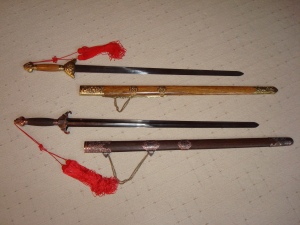 The final weapon of the four foundational Kung Fu weapons is the straight sword, which is famous in Chinese styles like Tai Chi (although Tai Chi and other internal styles also use a broadsword, long staff, and other weapons). This is an elegant weapon, even more so than the Japanese Ken (sword). It was the weapon of the scholar warrior, and was famous in the martial arts styles that originated in the Wudang Mountains. Unlike the broadsword, there’s no hacking here. This sword is used for slicing and thrusting. Even its blocking techniques are elegant. One of my favorite blocks is a slight parry, that’s almost like an upward slice, followed immediately by an offensive thrust.
The final weapon of the four foundational Kung Fu weapons is the straight sword, which is famous in Chinese styles like Tai Chi (although Tai Chi and other internal styles also use a broadsword, long staff, and other weapons). This is an elegant weapon, even more so than the Japanese Ken (sword). It was the weapon of the scholar warrior, and was famous in the martial arts styles that originated in the Wudang Mountains. Unlike the broadsword, there’s no hacking here. This sword is used for slicing and thrusting. Even its blocking techniques are elegant. One of my favorite blocks is a slight parry, that’s almost like an upward slice, followed immediately by an offensive thrust.
There are many more weapons in the Kung Fu arsenal, but these are the basic four, the foundation upon which Kung Fu weapon training is based. If you liked this post, check out my book on Kung Fu.
Newly Available on Kindle from Amazon: Essential Tips for Beginning Martial Artists 2
 My first martial arts booklet, Essential Tips for Beginning Martial Artists has proven so popular, that I have published a sequel, Essential Tips for Beginning Martial Artists 2. This volume contains an additional 14 tips to help you as you begin training. It includes matters such as how to use and not use martial arts books, articles, videos, and online resources. Essential reading for the new martial artist. More experienced martial artists will also benefit from this booklet.
My first martial arts booklet, Essential Tips for Beginning Martial Artists has proven so popular, that I have published a sequel, Essential Tips for Beginning Martial Artists 2. This volume contains an additional 14 tips to help you as you begin training. It includes matters such as how to use and not use martial arts books, articles, videos, and online resources. Essential reading for the new martial artist. More experienced martial artists will also benefit from this booklet.
